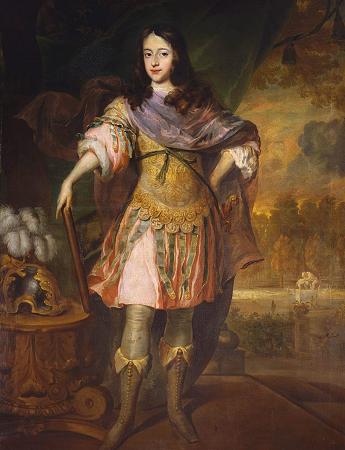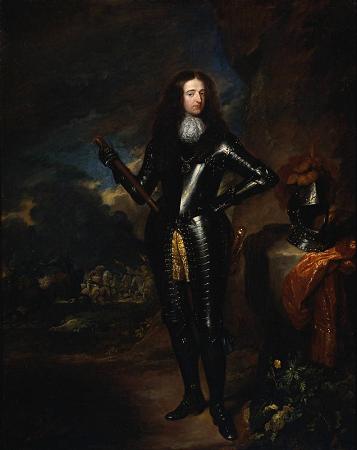William III of England (1650 - 1702). William III, also widely known as William of Orange, was sovereign Prince of Orange from birth, Stadtholder of Holland, Zeeland, Utrecht, Guelders and Overijssel in the Dutch Republic from the 1670s and King of England, Ireland and Scotland from 1689 until his death, co-reigning with his wife, Queen Mary II. Popular histories usually refer to their joint reign as that of William and Mary. As King of Scotland, he is known as William II. He is sometimes informally known as King Billy in Northern Ireland and Scotland, where his victory at the Battle of the Boyne in 1690 is still commemorated by Unionists and Ulster loyalists. William was the only child of William II, Prince of Orange, who died a week before his birth, and Mary, Princess of Orange, the daughter of King Charles I of England. In 1677, during the reign of his uncle King Charles II of England, he married his cousin Mary, the fifteen-year-old daughter of Charles II's brother James, Duke of York. A Protestant, William participated in several wars against the powerful Catholic King Louis XIV of France, in coalition with Protestant and Catholic powers in Europe. Many Protestants heralded him as a champion of their faith. In 1685, his Catholic uncle and father-in-law, James, became King of England, Scotland and Ireland. James's reign was unpopular with the Protestant majority in Britain, who feared a revival of Catholicism. Supported by a group of influential British political and religious leaders, William invaded England in what became known as the Glorious Revolution. On 5 November 1688, he landed at the south-western English port of Brixham. Shortly afterwards, James was deposed. William's reputation as a staunch Protestant enabled him and his wife to take power. During the early years of his reign, he was occupied abroad with the Nine Years' War. Mary died on 28 December 1694. In 1696, the Jacobites plotted unsuccessfully to assassinate William and return his father-in-law to the throne. William's lack of children and the death in 1700 of his sister-in-law Anne's last surviving child Prince William, Duke of Gloucester, threatened the Protestant succession. The danger was averted by placing distant relatives, the Protestant Hanoverians, in line. Upon his death in 1702, the king was succeeded in Britain by Anne and as titular Prince of Orange by his cousin, John William Friso. William III was born in The Hague in the Dutch Republic on 4 November 1650. Baptised William Henry, he was the only child of stadtholder William II, Prince of Orange, and Mary, Princess Royal. Mary was the eldest daughter of King Charles I of England, Scotland and Ireland and sister of King Charles II and King James II and VII. Eight days before William was born, his father died of smallpox; thus William was the sovereign Prince of Orange from the moment of his birth. Immediately, a conflict ensued between his mother and paternal grandmother, Amalia of Solms-Braunfels, over the name to be given to the infant. Mary wanted to name him Charles after her brother, but her mother-in-law insisted on giving him the name William to bolster his prospects of becoming stadtholder. William II had appointed his wife as his son's guardian in his will; however, the document remained unsigned at William II's death and was void. On 13 August 1651, the Hoge Raad van Holland en Zeeland ruled that guardianship would be shared between his mother, his paternal grandmother and Frederick William, Elector of Brandenburg, whose wife, Louise Henriette, was William II's eldest sister. William's mother showed little personal interest in her son, sometimes being absent for years, and had always deliberately kept herself apart from Dutch society. William's education was first laid in the hands of several Dutch governesses, some of English descent, including Walburg Howard and the Scottish noblewoman, Lady Anna Mackenzie. From April 1656, the prince received daily instruction in the Reformed religion from the Calvinist preacher Cornelis Trigland, a follower of the Contra-Remonstrant theologian Gisbertus Voetius. The ideal education for William was described in Discours sur la nourriture de S. H. Monseigneur le Prince d'Orange, a short treatise, perhaps by one of William's tutors, Constantijn Huygens. In these lessons, the prince was taught that he was predestined to become an instrument of Divine Providence, fulfilling the historical destiny of the House of Orange-Nassau.
more...











